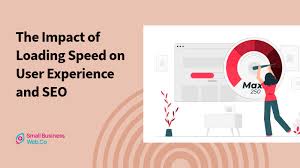Website speed plays a pivotal role in shaping the user experience and ultimately impacting conversions for any online business. In today’s digital world where time is of the essence, the speed at which a website loads can make or break its success. Let’s delve into the science behind website loading speed and how it influences user behavior and conversions.
The Significance of Website Loading Speed
In an era characterized by fast-paced lifestyles, users expect instant access to information. Consequently, a slow-loading website can lead to frustration and dissatisfaction among visitors. Moreover, it can result in a high bounce rate, where users abandon the site prematurely. This not only affects user experience negatively but also impacts search engine rankings, making it harder for potential customers to discover the website.
Relationship Between Website Loading Speed and User Experience
The correlation between website loading speed and user experience is undeniable. In a world where every second counts, users demand swift access to content. A slow-loading website can deter users, hindering their ability to find information promptly. Conversely, a fast-loading website enhances user satisfaction, leading to higher engagement and increased chances of conversions.
Impact of Slow Loading Speed on Bounce Rates and Engagement
Slow loading speed directly contributes to higher bounce rates and reduced user engagement. When users encounter delays in accessing a website, they are more likely to abandon it, leading to a negative impact on bounce rates. Additionally, sluggish performance diminishes user engagement, as visitors are less inclined to interact with content or complete desired actions.
Website Loading Speed and SEO
Search engines prioritize user experience, and website loading speed is a crucial factor in determining search engine rankings. A slow-loading website may be penalized by search engines, resulting in lower visibility and reduced organic traffic. By optimizing loading speed, businesses can improve their search engine rankings and enhance their online presence.
Role of Website Loading Speed in Conversion Rate Optimization (CRO)
Website loading speed significantly influences conversion rates. Studies have shown that even minor delays in loading time can lead to a decrease in conversions. Visitors are more likely to engage with a fast-loading website, increasing the likelihood of them taking desired actions such as making a purchase or filling out a form.
Cost of Slow Loading Speed for Businesses
The cost of slow loading speed for businesses extends beyond user dissatisfaction. It directly impacts revenue generation, as users are less likely to convert on a slow-loading website. Moreover, slow loading speed can tarnish a business’s reputation, leading to negative reviews and diminished customer trust.
Best Practices for Improving Website Loading Speed
Optimizing website loading speed requires implementing best practices such as optimizing images, reducing the number of plugins, using a fast hosting provider, and regularly monitoring performance. By prioritizing loading speed, businesses can provide a seamless user experience and maximize conversion opportunities.
Conclusion
Website loading speed is not just a technical aspect of website performance; it’s a critical determinant of user experience and business success. By understanding the impact of loading speed on user behavior and conversions, businesses can take proactive measures to optimize their websites and create a positive online environment for visitors.
Investing in website loading speed optimization is paramount for businesses looking to thrive in today’s digital landscape. A fast-loading website not only enhances user experience but also boosts conversions, ultimately driving business growth and success.



